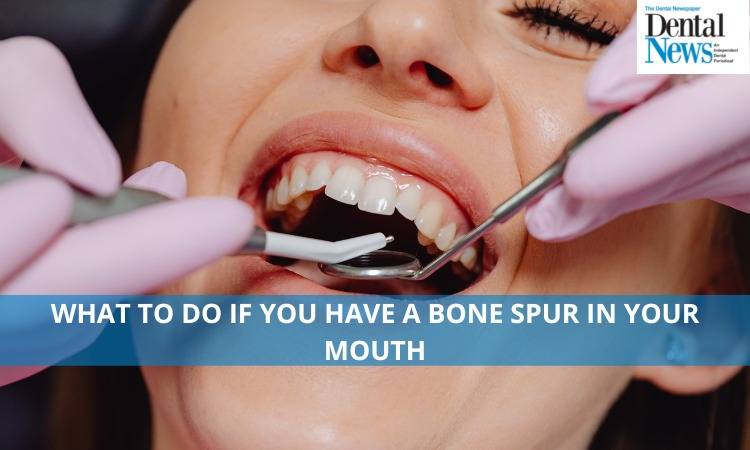
The dental bone spurs are sharp, microscopic particles of broken bone that has become embedded in the gums after dislodging from the surrounding tissues. These bone spicules cause some discomfort despite being completely safe.
If you've recently undergone oral surgery and detected something sharp with your tongue or finger, it could be a bone spur in your gums. Does having a bone spur necessitate seeing your dentist, even though it can be upsetting to have one? We're here to explain what a bone spur is, why it develops, and when it needs to be treated.
Why does a bone spicule protrude from your gum?
Structures called bone spurs grow on top of the existing bone. Dental bone spurs, also known as bone spicules, are a little different since they are little fragments of bone that may have broken off. After a dental procedure, these bone fragments may form on their own, and when the body removes them, they may protrude through the soft tissues in the area. Infection, illness, or damage to the mouth or nearby bones can also result in bone spurs.
What's the outcome? The unpleasant sensation of something sharp poking through your gums, as well as any pressure or unevenness in your mouth. Some people may even become alarmed if they experience what feels like a loose tooth piece.
You may also notice redness, swelling, or soreness near the painful bone that protrudes. In addition to making it challenging to eat or use your mouth in a normal, healthy way, gum irritation can occasionally lead to an infection.
Where do bone spurs most often develop?
The bony areas of your mouth, including your ligament and jaw bones, develop bone spicules all around them. The most typical locations for bone spurs or spicules are:
· Upper and lower jaw gums
· The areas of the mouth where teeth have been removed
· The site of any operations on your jaw bone, such as dental implant surgery or periodontal surgery
Treatment
Your dentist can determine if the issue is an oral lesion or a bone fragment from a bone spur after obtaining X-rays, MRI scans, or other radiographic imaging. Bone spicules in the gums can be treated by systemic antibiotic medication and an oral cleanliness regimen by visiting a dentist or maxillofacial surgeon.
It is crucial to maintain oral health in the first place due to the infection and inflammation in the exposed bone area in your gum. To help combat bacterial activity, your dentist will recommend mouthwashes and other oral hygiene products that include chlorhexidine. Your dentist may turn to antibiotic therapy when your gum's exposed bone site becomes inflamed, infected, or painful.
The procedure to remove the bone spur from your gum is the last step. Excision of the surrounding soft tissues or removal of the exposed bone is the surgical treatment for a bone spur. This is accomplished by procedures like sequestrectomy, which is the term used in dentistry to describe the removal of dead bone or another surgical method that your skilled dentist might suggest based on the stage of your bone appearance in the gum.
Bottom line
Dental bone spurs primarily develop as a result of bone injury brought on by dental surgeries, accidents, infections, or other potential disorders. In such circumstances, the body usually seeks to expel the undesirable components from the nearby bone through a natural eruption.
These errant bone pieces either fall out naturally or become lodged in the gums. If the bone chips are stuck in the gum tissues, they appear to be sticking out from the gums. Fortunately, there is a solution for this issue, and dental support can be used to eliminate the bony spurs.

Dr Amna Bilal
The author is a contributing writer at Dental News Pakistan and can be reached at amna0795@yahoo.com

